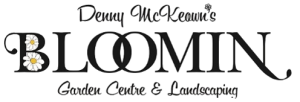Controlling Insects
Reprinted from The Green Scene May 1988
Insect |
Description |
Host and Infestation Time |
Controls |
| Aphids | Slow moving, oval or pear shaped 1/32” – 1/4”, many colors. Suck sap from anywhere on a plant, but concentrated on younger, more tender growth. | Infest nearly all types of plants from April through frost. | Soap: spray with insecticidal soap every few days until infestation is reduced. Neem Oil (Triple Action +) Chemical: Pyrethrum/Permethrin, Imidicloprid |
| Mites | Eight legged, almost microscopic. Weave fine spider-like webs on underside of leaves. Mites suck water and chlorophyll causing a chloratic or yellowed look. Often leaves appear wrinkled. | Arborvitae, spruce, pine, hemlock. Also most indoor plants. Attack plants from May through August. | Soap: spray every 3 days. Oil: applications of horticultural oil or neem oil a week apart often reduce infestations (except on Blue Evergreens) *Cool season mites need controls in spring and fall. |
| Leaf Miners | Larvae of certain sawflies, moths, flies, and beetles feed between the upper and lower surfaces of leaf creating serpentine tunnels visible on the leaf surfaces. | Birch, holly, boxwood, iris, columbine, chrysanthemum, and some vegetables. Prevalent early May through June. | Chemical: best prevented before major damage. Imidicloprid: systemic drench in October or early spring as a preventative. |
| Borers | Larvae of clear-winged moths and bark beetles, inside the cambium layer of branches and stems. Circulation is impeded and often the branch or whole plant dies. Look for sawdust-like material at the base of the tree. | Infest many plants. Prime hosts include rhododendron, birch, dogwood, ash, lilac, nut, and fruit trees. | Chemical: Imidicloprid—systemic drench in the fall or early spring. |
| Lacebugs | Named for their lacy wings, lacebugs can severely damage shrubs. Gathered on lower leaf surfaces, they suck plant sap. Leaves appear speckled on the upper surfaces. Undersides tend to be sticky. | Hosts include azalea, laurel, pyracantha, and cotoneaster. Damage begins in late April and continues through summer. | Soap: can be effective if total coverage is obtained. Chemical: Sevin gives good control if applied twice at 10-14 day intervals. Neem Oil 10-14 day intervals. Imidicloprid—systemic drench. Permethrin (every 2 weeks) *Must spray undersides of leaves |
| Scale | White, brown, or black, flat or bubble-like insects. May be either very hard or soft bodied. Scales remain stationary and may look almost natural on either leaves or stems. Their armor makes scales difficult to control. | Scales attack almost every variety of ornamental and indoor plant. Prime hosts include lilac, hemlock, pyracantha, euonymus, and many others. Sprays are more effective when scales are in the crawling stage in May and June. | Soap: Safer Soap used twice weekly. Oil: Dormant oil or neem oil at the lower summer rates applied 2 or 3 times at 10 day intervals. Chemical: Sevin for fruit trees. Imidicloprid—systemic drench on soft scale, not hard scale. |
| Beetles | Black-headed, shiny-bodied insects 1/4”-1” long. Skeletonize leaves with their constant eating. The larval stage (grubs) feed on grass roots, often causing extensive lawn damage. | Feed on all types of plants. Favorite hosts include roses, birch, oak, apple, walnut, and willow. Most damage occurs from June-August. Grubs do damage in April and May, then again in August-October. | Chemical: Seven only on food crops. Neem Oil, Imidicloprid as a drench in fall or early spring and Permethrins. |
| Weevils | Night feeders, appearing like long, thin, pointy headed beetles. Visibly damage foliage causing crescent shaped, often jagged injury to leaf edges. Though not detectable, even greater harm occurs below the soil line. | Rhododendron, yew, azalea, laurel, pine and hemlock. Infestations begin in June and continue through summer. Spray as soon as damage is apparent. | Chemical: Permethrin (10-14 days) |
| Snails and Slugs | Identified by their slime trails and repulsive looks. Populations increase in wet weather. Cut down plants at the soil line, or defoliate a young plant leaving only the main stem. | Normally feed on tender seedlings or damaged weaker plants. Snails and slugs arrive in early spring and stay through late autumn. | Natural: Coarse sand or diatomaceous earth Chemical: Metaldehyde baits (Buggetta and Sluggo). Consult label for safety around edibles. |
